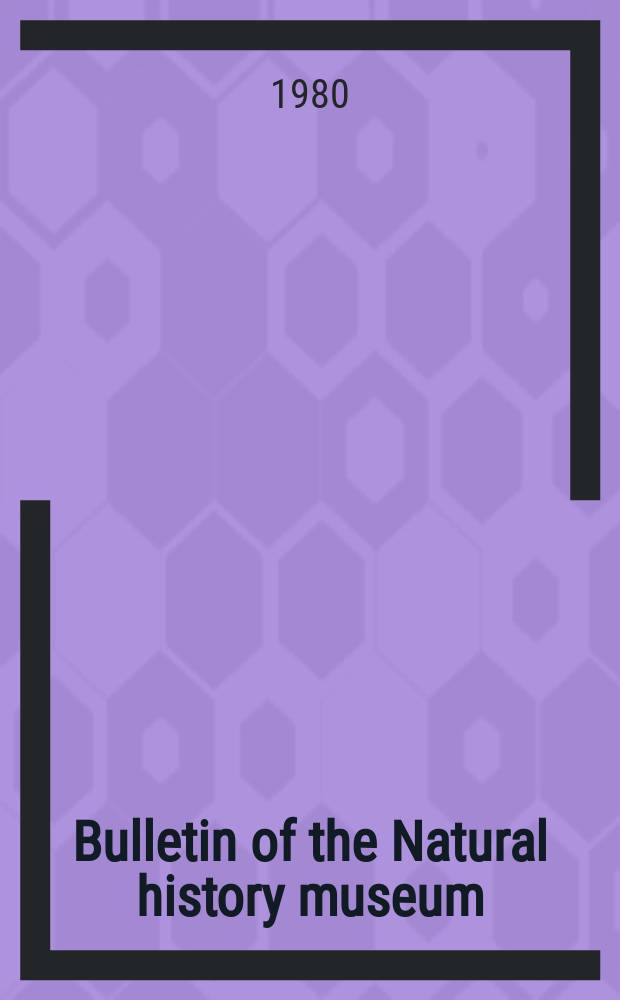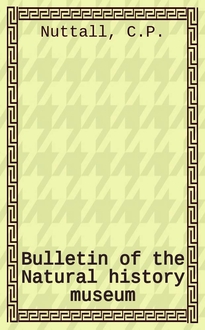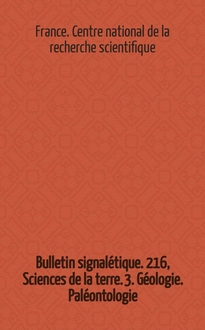Science Bulletins: Exploring a Star’s Death in 3D
Cassiopeia A is the gas cloud left behind after a star exploded, first glimpsed on Earth about 325 years ago. Its youth and proximity to us make it one of the ...
American Museum of Natural History
Science Bulletins: Thinking in Symbols
Modern human culture underwent a "creative explosion" in Ice Age Europe 40000 to 10000 years ago. The evidence, which ranges from fantastic cave paintings ...
American Museum of Natural History
Science Bulletins: Impact! Tracking Near-Earth Asteroids
Collisions between space objects are a vital part of the evolution of our Solar System. Most of Earth's impact craters have been wiped away due to plate tectonics ...
American Museum of Natural History
Walking with Arachnids in the Natural History Museum's Spider Pavilion
Every spring the Natural History Museum of Los Angeles County opens up their pavilion, letting you walk through a spectacular environment of butterflies.
KCET
Science Bulletins: Signs of Water Detected on Distant Worlds
Since the first extrasolar planet was discovered in 1995, astronomers have gathered and analyzed telescope data revealing over 1000 worlds orbiting other ...
American Museum of Natural History
Science Bulletins: Hubble Space Telescope—25 Years and Counting
Few of NASA's telescopes have captured the public imagination like Hubble, with its spectacular views of distant galaxies, supernovas, and nebulas. The first ...
American Museum of Natural History
Science Bulletins: Wild at Heart—The Plight of Elephants in Thailand
Elephants in Thailand have a big unemployment problem. Long a revered creature in traditional Asian cultures and a critical beast of burden for Asian ...
American Museum of Natural History
Science Bulletins: The Invasion: A Case Study on the Hudson River
Synopsis The zebra mussel, a notorious invasive species, has been silently infesting the rocky bottom of the Hudson River since it arrived there in 1991.
American Museum of Natural History
Science Bulletins: Jellies Down Deep
This Bio Bulletin, which features spectacular underwater footage, follows scientists at the Monterey Bay Aquarium Research Institute as they retrieve jellies from ...
American Museum of Natural History
Science Bulletins: Habitat Corridors Benefit Isolated Plants
In many open habitats, more than one-third of seeds are wind-dispersed. For isolated patches of plants, the interaction of wind with the landscape can determine ...
American Museum of Natural History
Science Bulletins: New Horizons Brings Pluto Into Focus
Tiny, faraway Pluto was first spied in 1930. This icy world is one of thousands of rocky bodies that make up the Kuiper Belt, a ring that circles our solar system ...
American Museum of Natural History
Science Bulletins: Aiming High—The Search for Ultra High-Energy Cosmic Rays
The history of cosmic ray research is a story of scientific adventure. For nearly a century, cosmic ray researchers have climbed mountains, soared in hot air ...
American Museum of Natural History
Science Bulletins: NAO—Driving Climate Across the Atlantic
For centuries, a massive atmospheric system has regularly altered weather patterns, fishery production and animal migrations across the North Atlantic Ocean.
American Museum of Natural History
Science Bulletins: One of the Earliest Primates Is Identified
Scientists recently uncovered a near-complete fossil skeleton of an ancient primate in China. The 55-million-year-old find presents a unique combination of ...
American Museum of Natural History
Science Bulletins: MRSA—The Evolution of a Drug-Resistant Superbug
The human body is a diverse bacterial ecosystem. Humans are hosts to trillions of microbes, most of which are harmless or even beneficial. But a new study ...
American Museum of Natural History
Science Bulletins: Diet Changes In Our Past Helped Harmful Microbes To Thrive
When humans became more dependent on carbohydrates, the diversity in our oral microbiome suffered. Farming brought significant dietary changes to human ...
American Museum of Natural History
Science Bulletins: Warm Forecast for Coral Reefs
Watch how satellites monitor the risks posed to coral reefs by ocean warming, and see where reefs might be more resilient to change in the coming decades.
American Museum of Natural History
Science Bulletins: Continental Deformation: Creating the Basin and Range
American Museum of Natural History
Science Bulletins: Tapping In—The Promise of Brain-Computer Interface
For decades, neuroscientists have sought to use electronics to communicate with the brain. Computing and surgical technique have now become sophisticated ...
American Museum of Natural History
Whale move: conservation commences | Natural History Museum
Follow our blue whale's continuing journey towards Hintze Hall, as the skeleton is moved into underground storage and the conservators start their work.
Natural History Museum
Science Bulletins: WISE Focus on Infinity
On September 30, 2010, a NASA space telescope called the Wide-field Infrared Survey Explorer, or WISE, completed its sweeping goal: to record observations ...
American Museum of Natural History
Science Bulletins: China's "Great Green Wall"—A Dust Antidote?
For decades, China has been planting trees along the rim of the Gobi Desert. This "Great Green Wall" is the largest forestation project ever attempted, designed ...
American Museum of Natural History
Science Bulletins: Deciphering History's Deadliest Pandemic
The unusual severity of 1918's "Spanish flu" pandemic has eluded explanation for nearly a century. Unlike typical flu epidemics, most of the victims in 1918 were ...
American Museum of Natural History
Science Bulletins: Brown Dwarfs—Tail End of the Stars
Journey to the heights of Mauna Kea in Hawaii where astronomers search for brown dwarfs, cosmic bodies that are not quite stars and not quite planets.
American Museum of Natural History
Science Bulletins: On the Hunt for a Balanced Diet
Biologists had long assumed that predators were more concerned with the quantity of their food than the quality, but a recent study shows that nutritional value ...
American Museum of Natural History
Science Bulletins: Rare Star Exposes a Black Hole's Appetite
A recent discovery near the Milky Way's center sheds light on the inner workings of our galaxy's supermassive black hole. Astronomers detected a rare type of ...
American Museum of Natural History
Science Bulletins: Ancestor of All Placental Mammals Identified
Mammals are a highly diverse group. Ranging widely in size and shape, unique specializations have allowed them to inhabit nearly every land and water ...
American Museum of Natural History
Behind the scenes at...Natural History Museum: See the blue whale before it goes on display
The Standard has gone behind the scenes in the conservation room, to discover how scientists are preparing the collection - including a giraffe skeleton, blue ...
Evening Standard
Science Bulletins: Down and Dirty Biodiversity
The soils in tundra, grasslands, tropical forests are very different, but they have one thing in common; they all host an astounding diversity of life. Inhabiting these ...
American Museum of Natural History
Science Bulletins: Melting Ice, Rising Seas
The rising temperatures of global climate change are melting the world's ice. Most notable are the shrinking ice sheets of Greenland and west Antarctica, which ...
American Museum of Natural History
Science Bulletins: Human Ancestor Went Out On A Limb
A recent study of fossil shoulder bones from a human ancestor reveals that this ancient relative was still well adapted to living in trees, even after the evolution of ...
American Museum of Natural History
Science Bulletins: Yellowstone—Monitoring the Fire Below
Three of the most catastrophic volcanic eruptions in geologic history occurred at a place now visited by nearly four million people a year: Yellowstone National ...
American Museum of Natural History
Science Bulletins: Derecho
On July 4, 1999, a rare and terrifying storm swept through the Boundary Waters Canoe Area Wilderness in northern Minnesota. What began like a ...
American Museum of Natural History
The Science of Speciation – Molecular Adaptation in Vampire Bats
Over 20% of all living mammal species are bats, and each is adapted to a particular diet: nectar, fruit, meat, insects—even blood! Follow scientists into the ...
American Museum of Natural History
Discovery of the ozone hole | Natural History Museum
Jonathan Shanklin, Meteorologist at the British Antarctic Survey, was one of the team that discovered the ozone hole in 1985. In this video, Jonathan reveals ...
Natural History Museum
Science Bulletins: Congo River
New technologies are making it easier for scientists to map bodies of water such as the meandering lower Congo River in Africa. By programming computers to ...
American Museum of Natural History
Science Bulletins: Focus on Mars
This month's Astro News features a roundup of Mars stories: • A high-resolution map of Mars's surface shows geologic structures in more detail than ever before.
American Museum of Natural History





















































